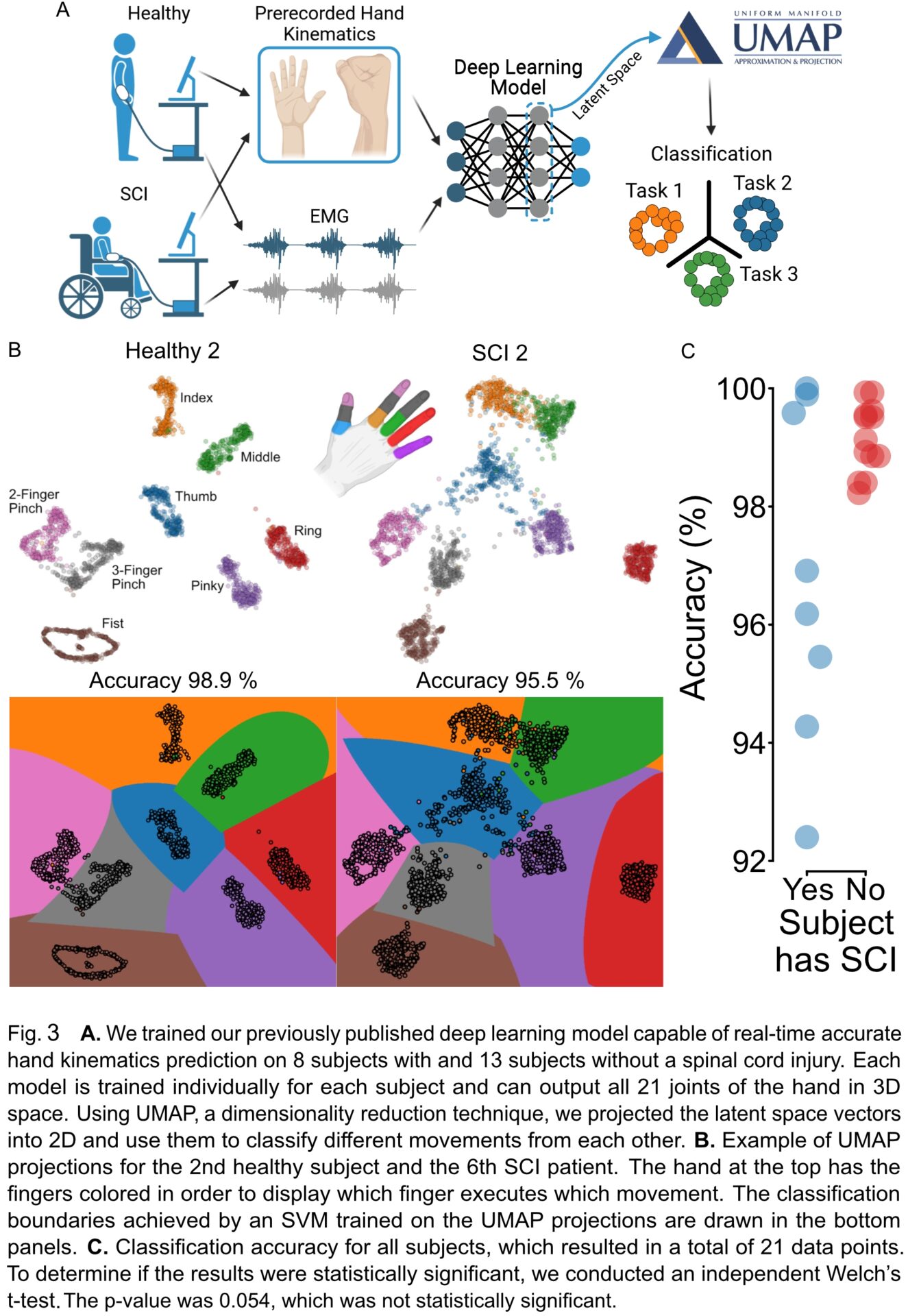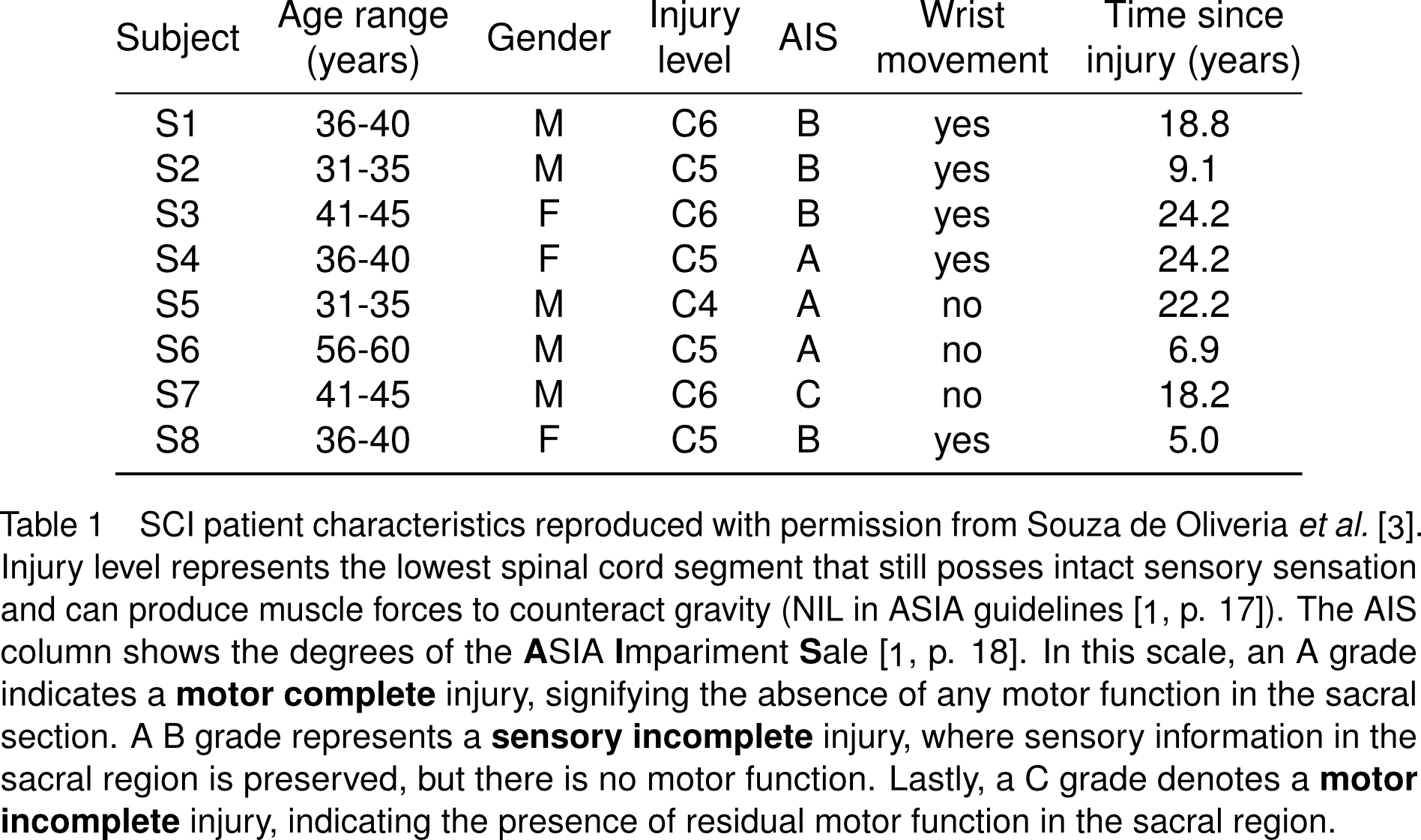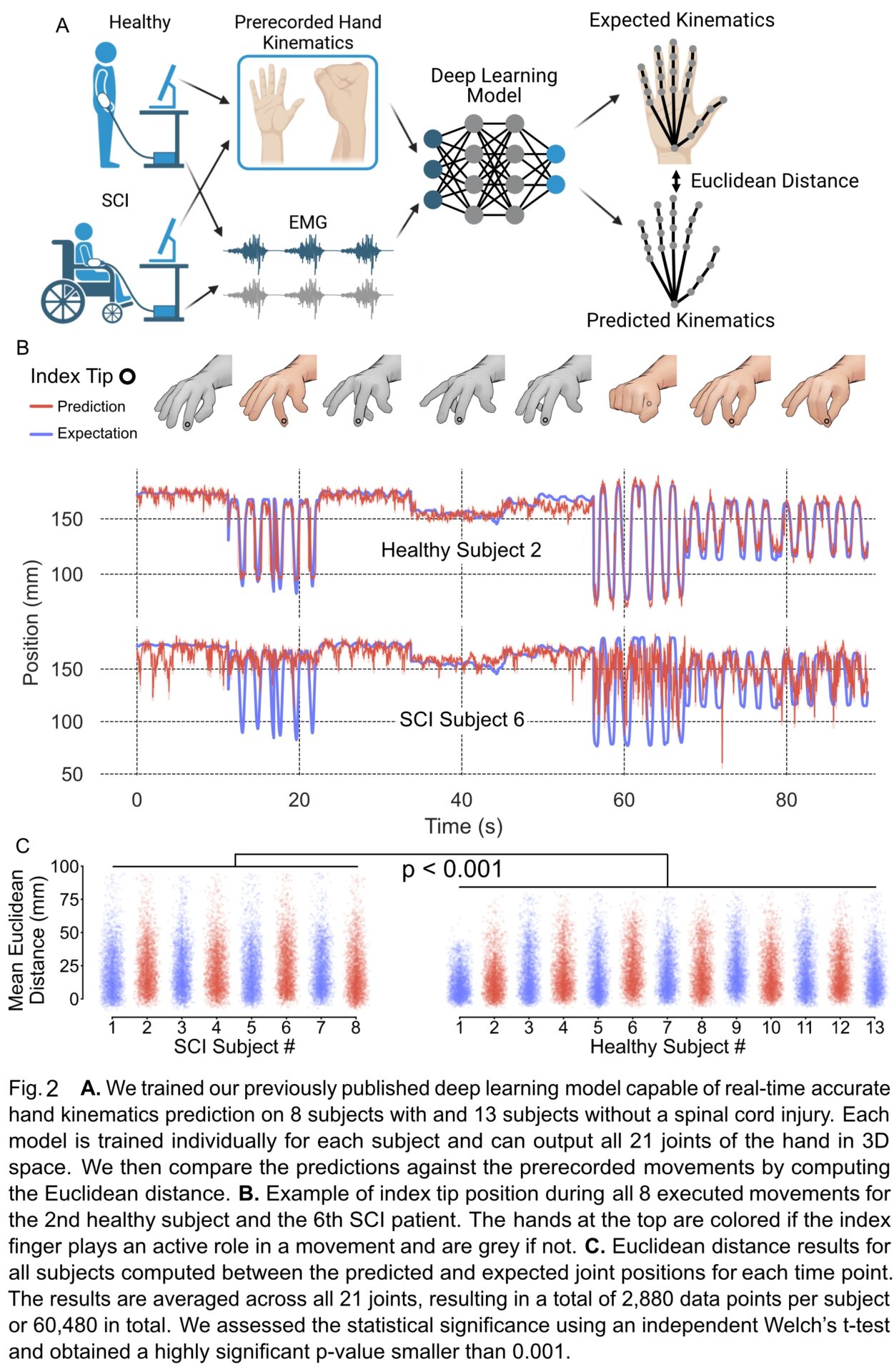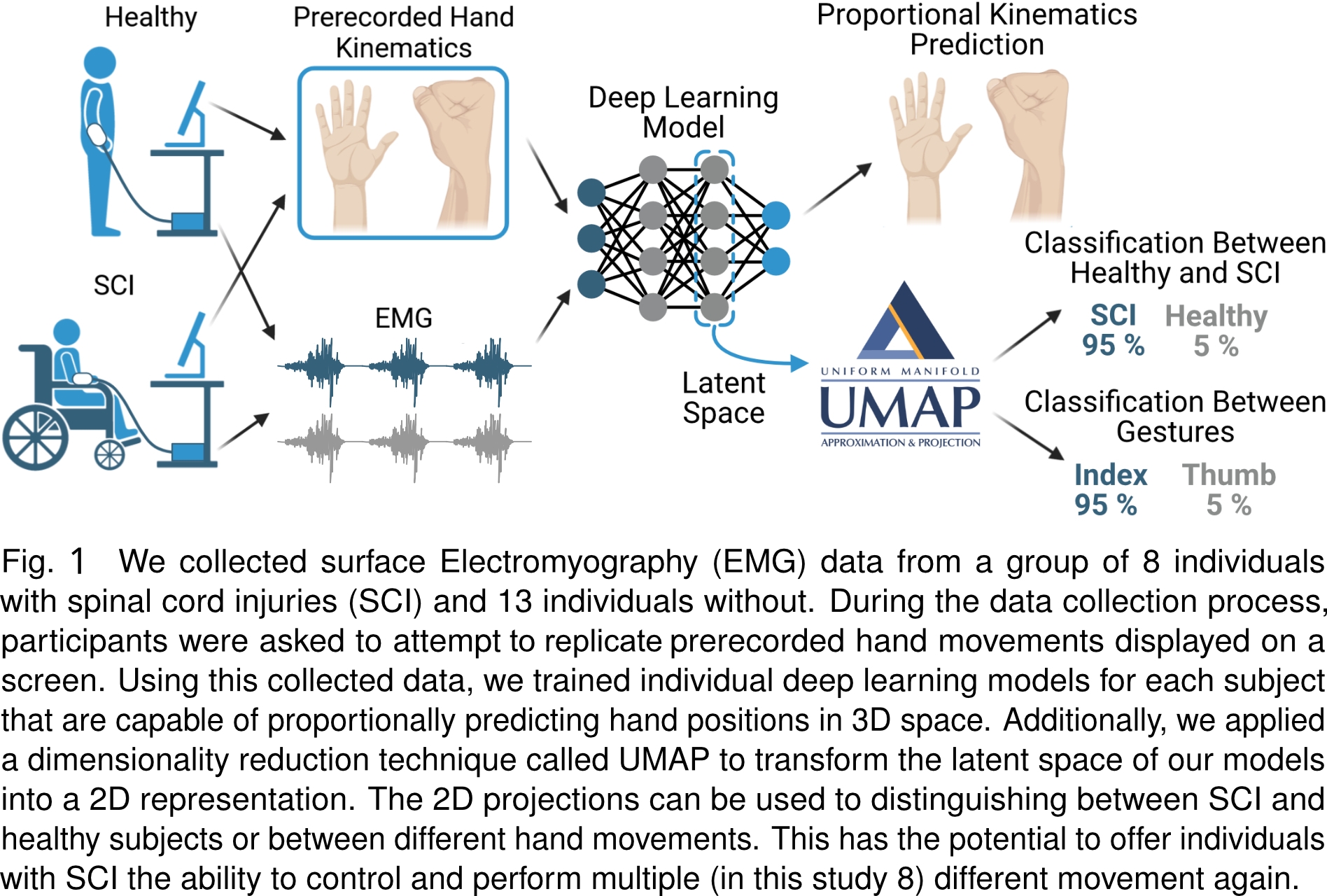Individuals with motor complete cervical spinal cord injuries [1] (SCI) typically lose all motor control of their hands, which has a significant impact on all daily living tasks. We recently found through surface electromyography (EMG) [2], [3] that some motor units (MUs) below the injured area remain unaffected and can generate task-specific signals controlling paralyzed hand motions. Based on this discovery, we hypothesize that these preserved signals can be utilized to predict the kinematics of hand movements. This prediction could empower patients to regain some degree of hand function through exoskeletons or other assistive systems.
To investigate this hypothesis (Fig. 1), we used two datasets consisting of 13 healthy and 8 motor complete chronic (C4-C6) SCI subjects (Table 1). Each subject followed and attempted to mimic a digitally displayed hand performing individual finger flexions, grasps, and 2- or 3-finger pinches, while we recorded the sEMG of their forearm using 320 electrodes. Our previously published AI [4], capable of real-time hand kinematics prediction, was then trained for each subject individually (Fig. 2A). For an explainable classification between SCI and healthy subjects or between the different movements performed (Fig. 3A), we projected the high-dimensional model latent spaces using UMAP [5] into a discernable 2D space. To make the projections between each other comparable, we automatically align the latent spaces during the projection stage together.
We found that our deep learning model was capable of making proportional hand kinematic predictions for healthy individuals, but when applied SCI patients it could, as expected, only predict a subset of movements, with a predominant focus on grasping and pinching actions (Fig. 2B & C, p < 0.001, n = 60480 predictions; 2880 per subject). Interestingly, we could classify the movements performed by SCI patients with an accuracy exceeding 92% and those performed by healthy individuals with an accuracy surpassing 97% (Fig. 3B & C, p = 0.054, n = 21 accuracy scores). By applying UMAP to the latent space, we visualized the spared motor functions that are still present in the electromyogram with clear distinctions between already recoverable and not recoverable motor functions. Utilizing these projections, we developed a classification algorithm that achieved an accuracy rate of 95%, with a single outlier injured subject being misclassified. Upon examination of this outlier, it was plausible to speculate that this subject may have the potential for complete hand recovery.
Although the results have been tested on offline data and online assessment is now in progress, we believe that such latent space analysis can provide valuable rehabilitation prospects for clinicians and patients alike and could help pinpoint the exact spared motor dimensions that are still present in the electromyograms. Lastly, the proposed AI system can proportionally predict in some cases more than half of the attempted movements which demonstrates that our solution can become a viable kinematics decoder for SCI patients.




